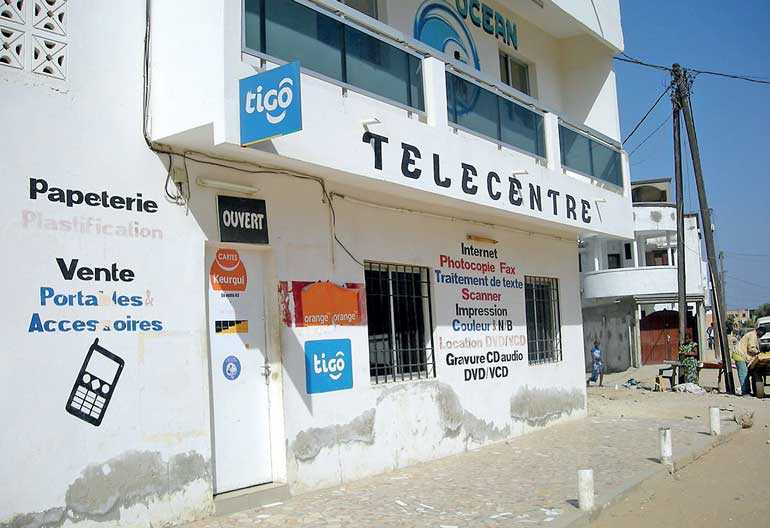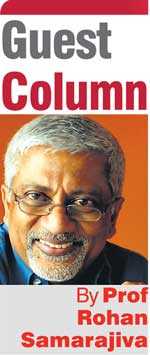Monday Nov 24, 2025
Monday Nov 24, 2025
Wednesday, 19 February 2020 00:00 - - {{hitsCtrl.values.hits}}

Most telecentres around the world have failed unless heavily subsidised. Those that survive do so by offering computer training courses and other services such as package delivery for e commerce. While one can see the rationale for co-locating all officials serving a village, it is difficult to see why the Government should get into unfair competition with private telecentres which are barely eking out a living
The manifesto of the winning candidate in the 2019 Presidential Election, ‘Vistas of Prosperity and Splendour,’ is now the governing policy framework of the Government.
In Chapter 6, ‘A technology-based society,’ it commits to establishing nine Citizen Service Centres using the internet and new technologies to deliver public services more effectively (identity cards, passports, driving licenses, etc.). In Chapter 10, ‘Dialogue with the Village,’ the Government announces its intention of establishing janamula centres in each of the 14,000+ GN divisions which, in addition to a meeting room, will accommodate village-level officials such as the Grama Niladhari, Samurdhi development officers, agricultural research and production officers and family health officers. It will also provide services such as internet facilities for youth, e-libraries, children’s centres, smart teaching rooms and technical service centres.
Delivering State services more effectively is a commendable objective. This column discusses whether the proposed modalities are the best ways of bringing the State closer to the people.
Lessons from vehicle revenue licenses
One does not obtain a driving license or a passport every year. But every vehicle owner must interact with the State once a year to obtain a revenue license. With over seven million vehicles (mostly two- and three-wheelers) on the road, the annual revenue license renewal is among the most important of State services. It is also one of the most complex, requiring real-time verification of documents issued by other agencies such as emission test certificates and insurance.
Almost all vehicles have been licensed annually using a computerised system for the past decade. That means over 25,000 transactions per working day, on average. The service is offered from 331 Divisional Secretariat offices, close to the citizen. 
A vehicle revenue license may be obtained in one of three ways: by going to a Divisional Secretariat Office and dealing with an official at a counter; or by using a kiosk in a Government office (introduced in the Northern Province); or online from any location. All three interfaces connect to the same backend.
According to the After Access research study published by LIRNEasia, only 37% of the population between the ages of 15 and 65 had used the Internet by end 2018. That is around five million people. Of these, only 30% (around 1.5 million) had used Government services online, including those who have just visited a website. Of this, only 14% (105,000 computer owners and 125,000 who do not own computers) have “got something done” (more than just finding information) at a Government site. Even if all 1.5 million government website users are convinced to obtain revenue licenses online, that would not come close to the seven million who need to renew annually.
The revenue license renewal process could be redesigned in a way that would be mobile-first. Problems such as the need to print a temporary license would be addressed. Multiple payment options, again optimised for smartphones, would be provided. But given the many citizens who still do not access government services online, the online mode must be supplemented with kiosks and mediated modes.
In the private sector, suppliers are sensitive to the needs of users. One of the earliest and most successful online services was E-Channelling. Here, appointments were made on a single computerised system but multiple modes or “doorways’ were made available to customers. They could use a call centre. They could make the appointment online. They could go to a pharmacy and get someone to obtain the appointment for them. They could pay the pharmacy in cash, use a credit card on the web or put it on the mobile bill or deduct from prepaid account when using the call centre.
Nine provincial centres or 331 DSDs or 14,000+ GN divisions?
Complex services such as the revenue license require reliable, secure broadband connectivity in all issuing locations. This is to enable the necessary verifications to be completed, and the processing can occur using the system that is housed in the cloud (a remote data centre). Today, the system fails if the secure, high-speed connectivity provided by the Lanka Government Network goes down.
The 331 Divisional Secretariat offices and the nine Provincial Secretariats are so connected and can provide real-time services to the public. There are a few gaps, such as buildings within various government office complexes that are not connected. But these gaps can be bridged quickly.
The target of providing State services at nine Provincial Secretariats has already been achieved for many services such as passports and revenue licenses. More can be provided easily. There is no reason to limit this to nine locations, when the groundwork has been done to provide services at 331 DSDs already and some services are already being offered.
The 14,000+ GN offices are not connected to the Government VPN [Virtual Private Network] today. The policy framework envisages new buildings that will house multiple officials, meetings rooms, e libraries and telecentres. It will take quite an effort to build these; it will be even more of a challenge to connect them to the Government VPN, which currently connects only 860 locations, mostly in commercial centres.
Most telecentres around the world have failed unless heavily subsidised. Those that survive do so by offering computer training courses and other services such as package delivery for e commerce. While one can see the rationale for co-locating all officials serving a village, it is difficult to see why the Government should get into unfair competition with private telecentres which are barely eking out a living.
The reason to co-locate officials in new buildings within each GN Division is not obvious. It would be more economical and indeed efficient to have these officials work out of the existing and VPN-connected DSD offices. Citizens can communicate with them using the almost universal mobile phone. What needs to be done is to improve the communication systems within DSDs so that citizens are seamlessly connected to the relevant official. Instead of new buildings, government should spend money on communication systems and on transportation for officials so they can get to the villages quickly.
It is time to retire the idea that effective digital government is when citizens obtain all services over the Internet. That option should be available, but priority should be given to hybrid modes where citizens can be assisted in their interactions with digital systems. The focus should be on re-engineering and rationalising the systems. Multiple interfaces should be enabled so that citizens with different levels of confidence and capability can still obtain the services.
Service delivery can be done through 331 DSD offices, in addition to the proposed nine regional centres. Much of the groundwork has already been done. Further decentralisation to janamula centres within each of the 14,000+ GN divisions should be reconsidered. New buildings and VPN connectivity will require enormous amounts of time and money. It may be more efficient to improve communication and transportation facilities at the existing DSDs. In this time of ubiquitous smartphones and low data charges, there is not much point in using public resources to build 14,000+ telecentres that few will use.